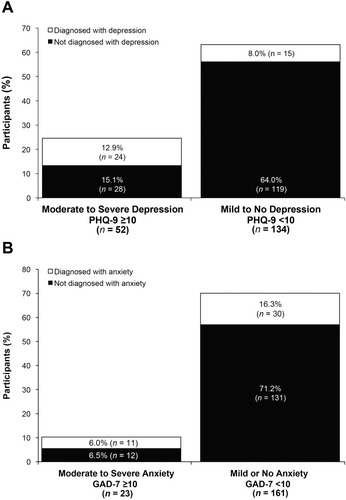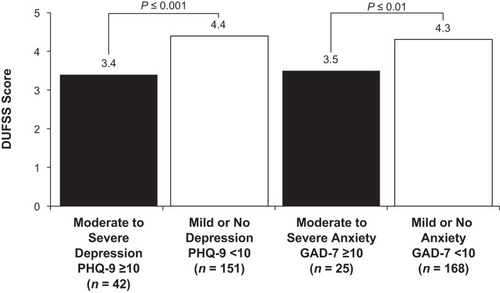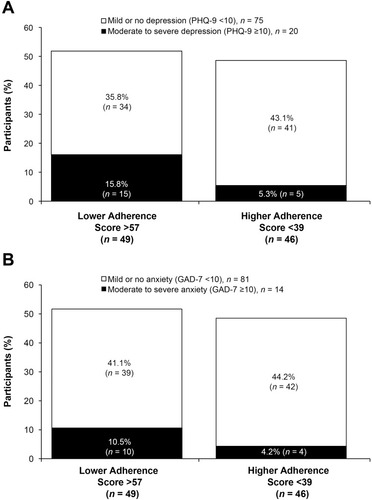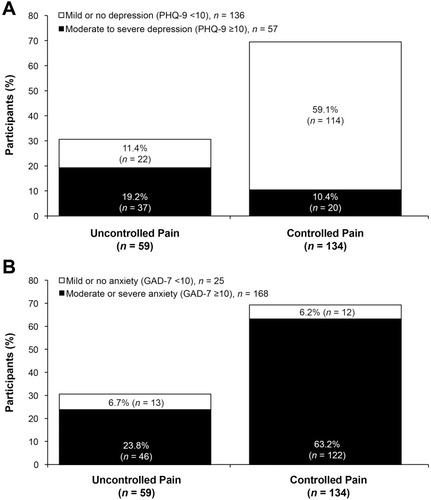Figures & data
Table 1 Demographic and clinical characteristics of study participants
Figure 1 Prevalence of diagnosed depression, by PHQ-9 scorea (A) and of diagnosed anxiety, by GAD-7 scoreb (B). Percentages were based on n=186 and n=184, respectively. P≤0.001 and P<0.01, based on χ2 analysis, respectively.
Abbreviations: GAD-7, 7-item Generalized Anxiety Disorder scale; PHQ-9, 9-item Patient Health Questionnaire depression scale.

Figure 2 Perceived social support, measured on the DUFSS, stratified by severity of depression and anxiety. The scale contains 8 items; 5 items assess social support, and 3 items assess affective support. Each response is scored on a scale of 1–5. The average score increases as the level of social support increases.

Figure 3 Prevalence of treatment adherence, stratified by presence of moderate-to-severe (A) depression (P<0.05, χ2 analysis) or (B) anxiety (P=NS, χ2 analysis).aPercentages were based on n=95.
Abbreviation: PHQ-9, 9-item Patient Health Questionnaire depression scale.

Figure 4 Prevalence of participants’ level of pain control, stratified by presence of moderate-to-severe (A) depression (P≤0.001, χ2 analysis) or (B) anxiety (P<0.05, χ2 analysis). aPercentages were based on n=193.
Abbreviations: GAD-7, 7-item Generalized Anxiety Disorder scale; PHQ-9, 9-item Patient Health Questionnaire depression scale.

Table 2 Correlation matrix of level of depression, anxiety, treatment adherence, and paina
